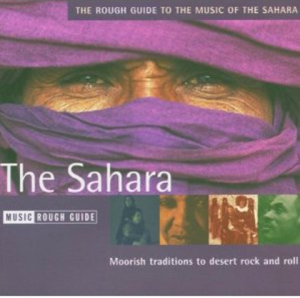 For the best part of two centuries, or more, The Sahara has exerted a powerful grip on the European imagination. It has been feared as a god-forsaken place; the graveyard of Beau Geste, Errol Flynn and hordes of young Foreign Legionaries and Desert Rats; a wild, bony, dry, hot, unforgiving and empty hellhole. But what the uninitiated often fail to appreciate is the Sahara’s powerfully seductive qualities. For most people who actually make it out there, enchantment is almost immediate. And for those born and bred within its vast confines, the desert engenders a love every bit as strong at that felt by the Englishman for leafy lanes and lush green pastures or by the Scotsman for bare backed hills and silvery sea-lochs.
For the best part of two centuries, or more, The Sahara has exerted a powerful grip on the European imagination. It has been feared as a god-forsaken place; the graveyard of Beau Geste, Errol Flynn and hordes of young Foreign Legionaries and Desert Rats; a wild, bony, dry, hot, unforgiving and empty hellhole. But what the uninitiated often fail to appreciate is the Sahara’s powerfully seductive qualities. For most people who actually make it out there, enchantment is almost immediate. And for those born and bred within its vast confines, the desert engenders a love every bit as strong at that felt by the Englishman for leafy lanes and lush green pastures or by the Scotsman for bare backed hills and silvery sea-lochs.
Some of the clichés of the European imagination can stand up to scrutiny. The Sahara is definitely hot, with a mean annual temperature of over 30°C. In the hottest months of April and May, just before the rainy season arrives, temperatures can leave the 50°C mark way behind. But the Sahara can also be cold, viciously cold. Hapless night travellers sometimes die of cold in the desert. The Sahara is certainly arid, with annual rainfall rarely more than 25mm and often less than 5mm in certain parts. An area like the Tanezrouft, the featureless plain that surrounds the ancient salt mines of Terhazza and Taodenni, is so dry that it is known as the ‘land of thirst’ or the ‘desert of the deserts’. In 1809 the bodies of 2000 caravaniers and their camels were found by chance in the Tanezrouft. Loosing your way and loosing your life can be fearfully synonymous in certain parts of the Sahara. But elsewhere, in the ‘wet’ months of July and August, floods occur, dry sandy beds become torrential rivers, lakes and ponds fill up, vistas become surprisingly green and wells overflow with water. At that time, local nomads feel a deep sense of relief and happiness as life is guaranteed for another year, and the impulse to celebrate and make music becomes especially potent.
The Sahara is vast. It spans the African continent from the Atlantic to the Red Sea, and from the Atlas ranges and the Mediterranean in the north to the Sahel in the south. The whole continent of Europe would fit into it easily, with plenty of space to spare. But in this huge expanse there is also a great variety of landscapes; seas of sand-dunes or ergs like The Grand Erg Occidental that faithfully provide a palpable answer to every child’s ultimate desert fantasy; billiard table-flat plains of gravel or regs that stretch for hundreds of miles like the Tanezrouft and Tamesna, so feared by generations of travellers; mountains ranges like the Hoggar, the Tibetsi, and the Aïr, with their mesas and lunar contours; desiccated scrublands in the Sahelian ‘coast’ of the southern desert; vast oases in the shadows of the Atlas ranges in the north. Each of these landscapes are capable of both extremely fierce, and extremely tender expressions, depending on the light, the heat and the time of day.
Although the Sahara is sparsely inhabited, with a population roughly one third that of greater London living in a territory far larger than Europe, it is by no means empty. The pre-historic stone carvings and paintings that literally litter some parts of the desert bear silent witness to a time when the Sahara was much wetter than it is today, carpeted by tall Savannah grasses and populated by rhinos, elephants, hippos, giraffes and chariot-riding humans. Since the land dried up, around 3000 BC, the Sahara has become a bolthole for peoples and tribes escaping invasion, war and oppression in North Africa, Egypt, The Middle East and black Africa. All the peoples who now live there…Touareg, Fulani, Moor, Tubu…have origination myths that tell of ancestors who came from some other place, conquered the ‘primitive’ people they found living there, and set up home. The Sahara has been decisively Islamicised since at least the 10th century AD, but faint hints of earlier Pagan, Jewish and Christian migrations can be found in the language and customs of its modern inhabitants.
Most Saharan people are still nomads, although the sedentary way of life is gaining ground. Outsiders often confuse the concept of nomadism with a kind of primeval soul-searching. In fact it is a life born of necessity. A nomad will roam a fixed territory, moving his herd of camels, cattle or goats with the seasons and the rains from well to well, pasture to pasture. It is an extremely harsh existence but it brings with it a priceless independence and a deep bond between man and nature. A nomad needs little or nothing except what the land and sky around him freely provides. Most recent conflicts, like those between the French colonisers and various Touareg factions like the Kel Ahaggar, Kel Aïr and Ouellemeden, arose when the Touareg felt that their freedom and independence were threatened. The Touareg rebellion that broke out in the Adrar des Iforas region against the newly minted Malian state in 1963, and more recent rebellions in the early 1990s, also share the same root causes. Why must we pay taxes when God provides all we need? Why must we educate our children to read and write when neither of these skills will help them survive in the bush? Why do we need papers or passports to cross lands that our forefathers have roamed freely for centuries?
This sense of freedom is also the secret of the Sahara’s seductiveness. The desert and the nomads who inhabit it, embody so much of what was irrevocably lost in Europe and other ‘developed’ societies long long ago; space, simplicity, freedom, timelessness and the bond with nature. The epic immensity and undisturbed silence of its landscapes are the perfect antidote to bricked-up lives and the tyranny of the clock. Most newcomers sense the awesome pull of this freedom almost immediately. For the local, it is perhaps more subliminal, co-existing with hard and unremitting physical labour, corrupt officialdom, droughts, flash floods, atrocious roads and the occasional rebellion. Life in the desert is not easy, but it is both seductive and essential.
In terms of music and culture, the Sahara is like an inland sea, where the sounds, tastes and colours of peripheral ‘port’ cities like Marrakesh, Sijilmassa, Timbuktu, Agadez, Ghardaia, In Salah, Ghat, Ghadames, Tunis, Tripoli, Siwa, Cairo, Walata, Chinguetti, Djenné and Kano have mingled for centuries. This fact makes it a fascinating catalytic space whose role mirrors that of the Mediterranean Sea to the north. Over its immense rock-strewn wastes, the Arab and Berber cultures of the Maghreb have cross-faded with those of the Fulani, Songhai, Manding, Bambara, Wolof, Dinka and many more further south.
Our odyssey through the immense musical treasury of the Sahara starts in the far north west of the territory, in the huge oases of the Tafilalet, which nestles under the towering bony vertebrae of the Saharan Atlas range. It’s an area that gave birth to numerous quasi-religious dynasties that went on to conquer swathes of the Maghreb and southern Spain. The present Moroccan King, Mohammed VI, is a descendant of one such clan. It’s clear that the region is a source of immense musical riches too. The Compagnie Jellouli & Gdih come from Erfoud, the capital of the Tafilalet, and they play a style of music known as al baldi, in which the elegance of Andalusian melodies are coupled with the searing intensity of Berber music from the Atlas, and the harrowing lyricism of popular malhoun poetry. Centuries ago, the caravaniers that left the region to travel south to the salt mines of the Tanezrouft before crossing the Sahara to trade in their salt for an equal weight of gold in the bilad as soudani, ‘The Land of the Blacks’, must have had melodies such as this one swirling in their heads.
Moving over one thousand miles west by south-west we come to the Republic of Mauretania and one of its most remarkable up and coming young stars, Malouma Mint Meidah. Malouma has forged a name for herself as an innovative band leader and outspoken female voice in a country which has long been straight jacketed by fundamental Islamic mores and the dominance of old traditional musical castes. ‘Jraad’ is taken from her second album ‘Dunya’, which was recorded in the capital Nouakchott and released to global acclaim in 2003. It faithfully portrays her rebellious musical spirit, and her desire to incorporate jazz, blues, rock, soul together with the widest possible range of native Mauritanian sounds into a stunningly original new mix, thereby giving her fellow Mauritanians a bright new musical horizon.
The northeastern corner of Mali, a region known as the Adrar des Iforas, has been a cradle of dissent since independence in the early 1960s. In the 1970s and 1980s drought and oppression drove thousands of young Touareg, or ‘Kel Tamashek’ (The Tamashek speaking people) as they refer to themselves, into exile in Algeria and Libya. In military training camps set up by the opportunistic Colonel Khadafy, these young clandestinos learned how to fight, and in the early 1990s they returned home to launch a rebellion. Tinariwen were the pied pipers of this youthful movement of so-called ishumaren, or ‘unemployed’. Since the first Festival in the Desert, which took place near their hometown of Kidal in the Adrar in 2001, Tinariwen have toured the globe and the outside world has woken up to their searing skeletal brand of desert blues. However, ‘Alkhar Dessouf’, a mesmerically moody song about loss, nostalgia and love, illustrates the essential point about Tinariwen. They are first and foremost rebels of the soul, not the Kalashnikov, and their real battleground is the human heart.
The songs, rhythms and melodies of black African slaves and migrants and their descendants are a core element of modern North African music. In Morocco this heritage is sometimes called gnawa music, in Algeria it’s called diwan, or more specifically diwan de Bechar. Bechar is a dust blown town on the northern edge of the Sahara, made famous in colonial times by the antics of the Foreign Legionary garrison stationed there. It is now home to Hasna El Becharia, doyenne of the diwan style, and queen of the vibrant local wedding music scene. Hasna is virtuoso of the various Afro-Maghrebi instruments like the gut-string bass known as the guembri, or the metal castanets known as krakesh, and her jaunty tune ‘Hakmet Lakdar’ sums up her Afro-Berber-Arabic heritage very well.
Taking one of those huge geographical leaps that are obligatory in any brief overview of Saharan music, we end up in the southern Libyan oasis of Fezzan, whose links with the Mediterranean world date back to pre-Roman times. The territory has long been a battleground with Touareg and Arab nomads who have fought with the local black African Tubus for control. Chet Fewet are a powerful and youthful musical combo from the area, whose Arab-flavoured melodies are lent a rough, rootsy fire by the group’s own Touareg berber heritage.
It’s not only misinformed Europeans that have deemed the Sahara an empty place. Rapacious North African leaders have also used this widespread misconception to further their territorial ambitions. In 1975 King Hassan II of Morocco lead an army of soldiers and civilians into the vast deserts that line the Atlantic coast south of Morocco, which had previously been called ‘Rio d’Oro’ or ‘Spanish Sahara’. As far as he and his counsellors were concerned, this ‘empty’ territory was Morocco’s by historical and geographical right. The local Sahraoui people disagreed and their military arm, the Polisario, have been fighting for independence ever since. This bitter struggle has few silver linings, but one has been superlative canon of Sahraoui songs and recordings inspired by the conflict. Aziza Brahim, Nayim Alal and Mariem Hassan are all leading lights in this movement, and the raw uncompromising power of their music is self-evident.
Another group born out of struggle is Tartit Ensemble, let by the charismatic Fadimata ‘Disco’ Walet Oumar. Tartit, which means ‘union’, are all Touareg from the Kel Antessar tribe who have held sway in the deserts around the historic city of Timbuktu for centuries. During the Touareg rebellion of the early 1990s, Disco and many of her fellow Kel Antessar escaped to refugee camps in Mauretania. It was there that they founded a women’s music group in order to foster good spirits and strengthen cultural pride. With the help of friends and aid agencies they managed to tour Europe and have since become the world’s most famous ambassadors of traditional Touareg music. The group mostly comprises women, but it also includes a few men, including the singer Mohamed ag Abada, who performs with such haunting effect on the song ‘Ikruhuwaten’, which was recorded in the refugee camp in 1996. Tinariwen, Tartit and the Sahraoui musicians are all proof of the painful irony that while conflict and rebellion have had a cruel and devastating effect on desert peoples and their lives, they have also been the source of some of the greatest modern music to come out of the region.
The Songhai people have shared the southern fringes of the Sahara, along the banks of the Niger River, with the Touareg for centuries, and despite recent events, the two ethnicities have managed to live in harmony for most of that time. The city of Timbuktu and its environs have thrown up Songhai musicians of international repute like Ali Farka Touré and Afel Bocoum, but these names are only the tip of the proverbial iceberg. A local musical hero is the young Songhai singer Seckou Maiga, who has established himself as a serious contender after only three cassette releases. The cover of his 2002 release ‘Malfa Sibori’ depicts the Flame of Peace of 1996, a milestone event in which 3000 small arms, collected from combatants on both sides of the Touareg rebellion, were burned on a ritual pyre on the outskirts of Timbuktu. The Flame of Peace marked a definite end to hostilities and the beginning of a fragile peace which has so far managed to hold fast.
Another group who have helped to make the Timbuktu region a trove of musical, as well as historical treasures, are Kel Tin Lokiene. Lead by Hemi Ag Akreirou, this fifteen strong troupe delve deep into the funky yet diamond hard heart of traditional Touareg music. Their subject matter is often dominated by tales of old heroes and warriors, and the virtues of courage and chivalry that were apparently so much stronger in days of yore than now. Nostalgia for the past is an affliction felt as strongly in the Sahara as in Europe or anywhere else.
Agadez in northern Niger is a town that rivals Timbuktu in terms of historical and political importance. The presence of local uranium mines, made world famous by the hollow claims of President Bush and his entourage in the lead up to the second Gulf war, have also afforded the area increased wealth and notoriety. The nearby deserts of the Aïr and the immense Grand Erg du Ténéré possess some of the most beautiful and breath-taking scenery in the entire Sahara. Group Oyiwane are a local group lead by Balla ‘Barmo’ Kader, that have existed for two decades. Their music is based on the traditional rhythm of the tindé drum, which is itself based on the loping gait of the camel.
The Berber music of the northern desert fringes in Algeria is sometimes called Sahraoui, not to be confused with the people and music of the Western Sahara. Its core instrument is the rosewood desert flute or gasba, whose searing plaintive tones best describe the sound and mood of a forlorn desert wind blowing in from those interminable stony prairies. Sahraoui Bachir is one of the leading cheikhs, or improvising male poets and singers, of the genre. His vocal style is stark and powerful. It’s a sound that sums up the Sahara, in all its fearful, harsh yet seductive beauty.


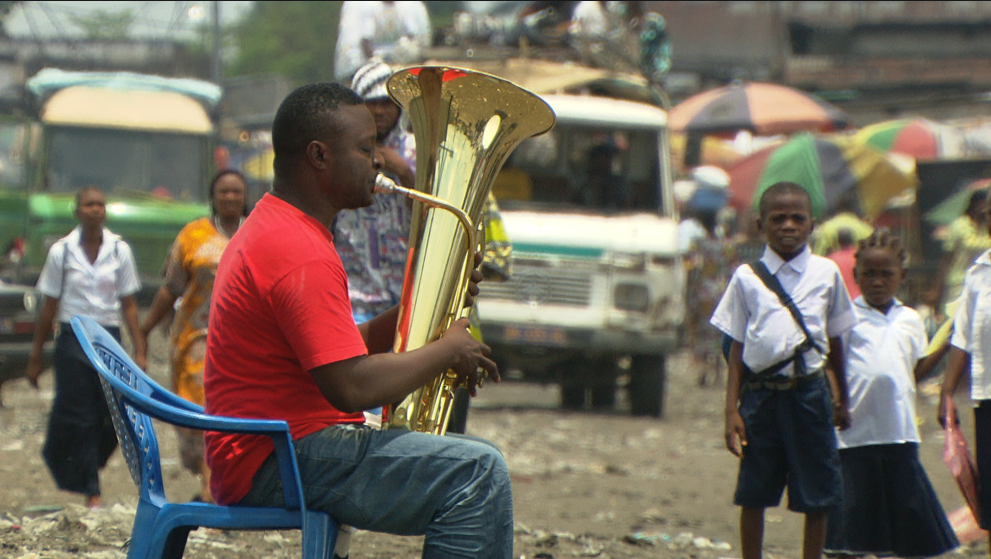

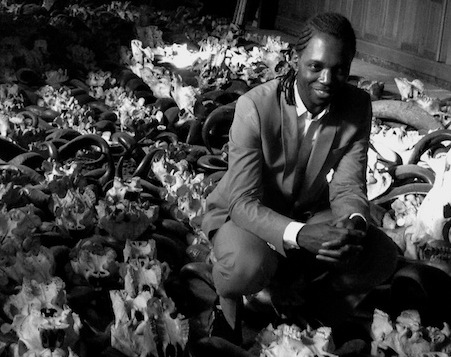
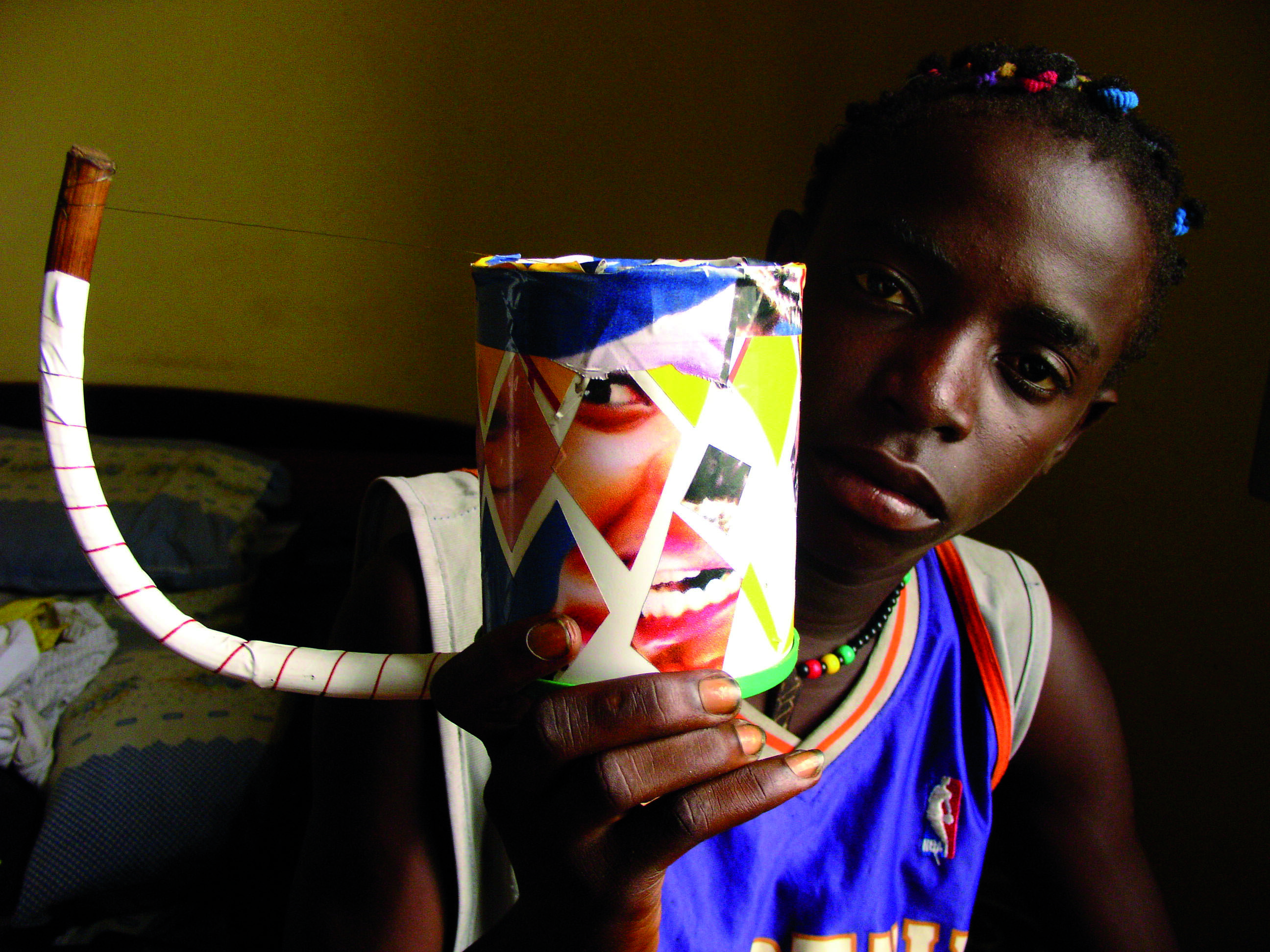
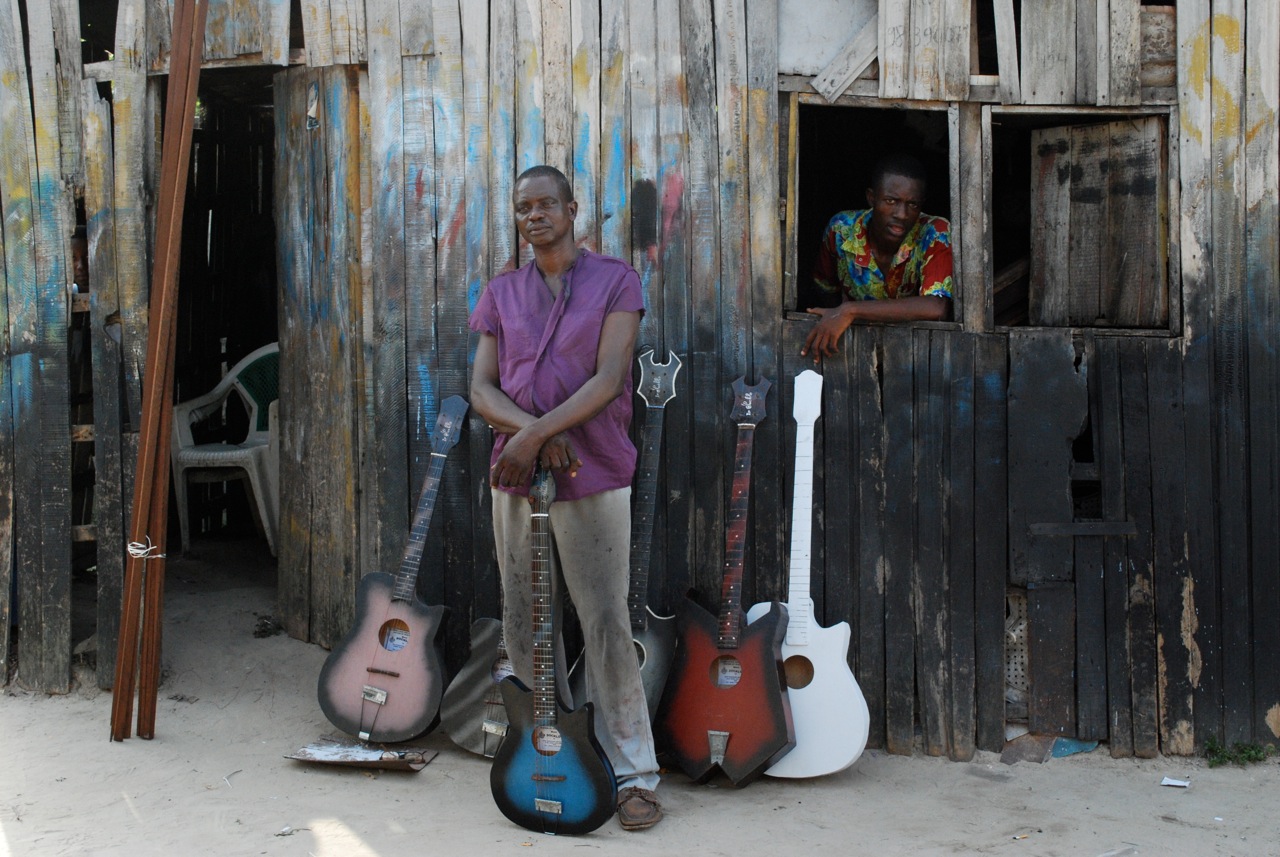
1 comment for “The Rough Guide to the Music of the Sahara”